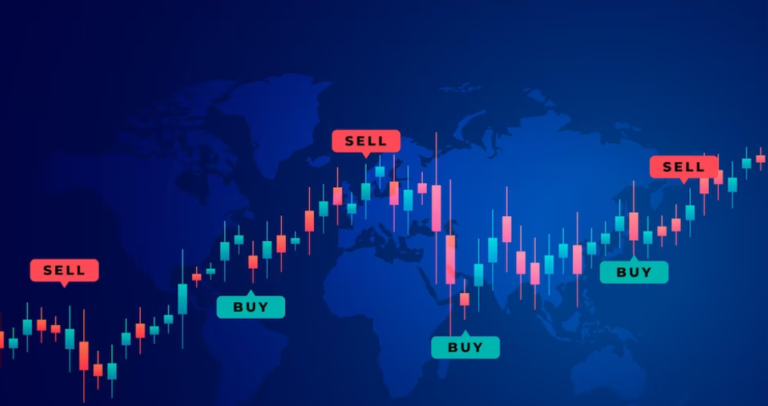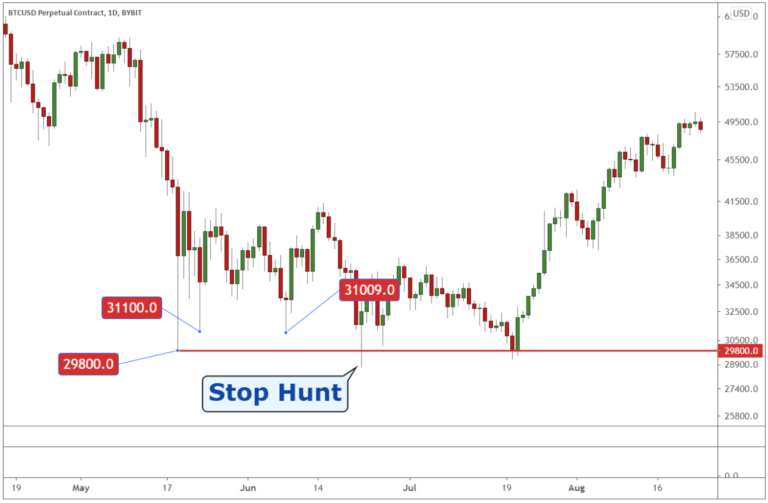Gone are the days when trading floors buzzed with chaotic shouts and frenzied gestures. The modern financial landscape is now dominated by silent, algorithmic warriors, epitomized by firms like Jump Trading. These entities engage in ultra-fast trading through fiber optic connections, executing millions of trades in mere seconds, a stark contrast to the traditional methods of trading.
Jump Trading emerged in 1999, the brainchild of two former pit traders who quickly embraced the potential of technology over human capabilities in trading. Their focus was not on manpower but on the power of machines, operating at incredible speeds. The firm, known for its secretive nature and controversial strategies, has become a dominant force in both volatile cryptocurrency and traditional markets.
History and Growth of Jump Trading
From its inception in 1999 by Paul Gurinas and Bill Disomma, Jump Trading has evolved from a small group of traders with handheld computers to a global powerhouse. It now boasts a significant presence with over 700 employees across major financial hubs. The firm has carved a niche for itself by consistently ranking among the top trading firms globally, generating billions in revenues. Jump’s obsession with speed has led to substantial investments in infrastructure and technology. This includes advanced communication technologies like microwave towers and custom trading software, all designed to minimize latency and secure a competitive edge.
Business Model and Strategies of Jump Trading
Jump Trading stands as a paragon of how human intellect and technological innovation can be synergized to redefine the landscape of financial trading. The firm’s approach is a testament to the power of combining human expertise with cutting-edge technology, leading to groundbreaking strategies in the financial world.
At the heart of Jump Trading’s success is its team of data scientists and quantitative analysts, whose role is pivotal in developing the sophisticated algorithms that drive high-frequency trading and statistical arbitrage. These professionals are not just experts in their fields; they are innovators who continually push the boundaries of what can be achieved through data analysis and algorithmic complexity.
The strategies employed by Jump Trading are diverse and multifaceted, reflecting the dynamic nature of the financial markets. The firm engages in a range of activities, including liquidity provision, which is crucial in maintaining market stability and efficiency. By acting as a market maker, Jump Trading plays a vital role in ensuring that buy and sell orders can be executed without significant delays, thus enhancing market liquidity. Event-driven trading is another key strategy at Jump Trading. This involves making calculated trading decisions based on significant occurrences such as economic announcements, corporate news, or geopolitical events. Such strategies require not only advanced algorithms but also a nuanced understanding of how such events can impact financial markets.
Furthermore, Jump Trading has cultivated strong relationships with exchanges and operates in dark pools, which are private forums for trading securities not openly available to the public. These relationships and networks allow Jump Trading to gain critical advantages in terms of speed and access to information, reinforcing its position as a leader in the field.
Jump Trading’s approach is not just about speed; it’s about smart speed. This means making quick decisions that are also informed, strategic, and data-driven. By leveraging the latest technologies in data processing and network infrastructure, the firm ensures that its trading activities are not only fast but also intelligent and responsive to market dynamics. Jump Trading’s business model and strategies showcase an impressive integration of human intelligence and technological capability. This combination enables the firm to operate at the forefront of the financial trading industry, constantly adapting to and capitalizing on the ever-changing market conditions. As the financial world continues to evolve, Jump Trading’s blend of talent and technology positions it well to continue leading in innovation and efficiency.
Controversies and Criticisms of Jump Trading
Despite its towering achievements, Jump Trading has faced its fair share of challenges and controversies. The firm’s high-frequency trading (HFT) practices, while technologically impressive, have attracted criticism and regulatory scrutiny, highlighting the complex ethical landscape of modern financial trading.
Critics of Jump Trading argue that its HFT strategies contribute to market instability. By executing trades at lightning speeds, the firm can significantly influence market dynamics, often leading to accusations of creating an uneven playing field. This perceived advantage over traditional investors has sparked debates about the fairness and integrity of financial markets in the age of algorithmic trading.
Additionally, Jump Trading has been embroiled in incidents that have caused market disruptions. Notably, trading errors attributable to the firm have led to temporary but significant impacts on market stability, raising questions about the risks associated with automated trading systems. These errors underscore the potential for unforeseen consequences in a market increasingly reliant on algorithms. Moreover, Jump Trading has faced allegations of engaging in questionable practices such as quote stuffing, where a large number of orders are rapidly placed and then cancelled, potentially misleading other market participants. Such strategies, although part of the competitive arsenal in HFT, have been criticized for being akin to market manipulation.
These controversies have not only impacted Jump Trading’s reputation but have also brought attention to broader issues in the HFT sector, including the need for more robust regulatory frameworks to manage the complexities and potential risks of this form of trading. In the realm of cryptocurrencies, Jump Trading’s activities have also been scrutinized. The largely unregulated nature of crypto markets presents unique challenges, and the firm’s aggressive strategies in this space have sometimes led to criticisms of exacerbating the volatility and unpredictability of these markets.
While Jump Trading’s technological prowess and strategic innovations have earned it a place at the forefront of the financial trading world, the firm must navigate an environment where success is closely intertwined with public perception and regulatory oversight. Addressing these criticisms and adapting to an evolving regulatory landscape will be crucial for Jump Trading as it seeks to maintain its leading position in the industry.
Achievements and Milestones
Jump Trading’s trajectory in the world of finance has been nothing short of remarkable, marked by a series of technological innovations and strategic advancements, especially in emerging markets. This firm, from its early days, has always been at the forefront of trading technology, constantly pushing the boundaries of what’s possible in the financial sector.
One of Jump Trading’s most notable achievements is its role in revolutionizing the speed of trading. The company set a world record in executing trades, showcasing its ability to process transactions at unprecedented speeds. This not only demonstrated Jump’s technical prowess but also significantly influenced the way markets operate today, where milliseconds can mean the difference between profit and loss.
Jump was also among the first to dive into the then-nascent world of Bitcoin futures trading. By taking early steps into cryptocurrency, Jump not only expanded its own operations into a new and lucrative market but also played a pivotal role in legitimizing and stabilizing cryptocurrencies as a financial asset. This move was a testament to Jump’s vision and willingness to venture into uncharted territories.
Moreover, Jump’s substantial contributions to cryptocurrency liquidity cannot be overstated. By providing essential liquidity, Jump Trading has helped in stabilizing the often volatile cryptocurrency markets, making them more accessible and reliable for investors. This has had a significant impact on the growth and maturity of the crypto market, further solidifying Jump’s position as a trailblazer in financial trading. In addition, Jump Trading’s technological advancements extend beyond trading speeds and cryptocurrencies. The firm has been a leader in developing and implementing cutting-edge technologies like artificial intelligence, machine learning, and predictive analytics in trading. These technologies have not only enhanced Jump’s trading strategies but have also set new standards in the industry, inspiring other firms to innovate and adapt.
Furthermore, Jump Trading has played a crucial role in bridging the gap between traditional financial markets and the evolving digital finance landscape. By integrating advanced technologies with financial acumen, Jump has created a unique business model that leverages the strengths of both worlds, positioning itself as a versatile and resilient player in the finance industry. Jump Trading’s journey is a blend of innovation, foresight, and strategic risk-taking. The company’s achievements have not only shaped its own destiny but have also had a profound impact on the global financial markets. As Jump continues to navigate the complexities of modern finance, its role as a pioneer and innovator remains more relevant than ever.
Future Outlook for Jump Trading
As it navigates the intersection of finance, technology, and crypto, Jump Trading faces a future of adaptation and evolution. The firm will likely continue to push technological boundaries while expanding its presence in the cryptocurrency sector. However, it must also contend with increasing regulatory scrutiny and the challenges of a volatile crypto market.
Conclusion
Recent controversies, particularly in the realm of cryptocurrencies, have indeed placed Jump Trading at a crossroads. The volatility and regulatory ambiguity in the crypto markets underscore the inherent risks of operating in such unregulated spaces. These incidents, including legal entanglements surrounding the collapse of TerraUSD, have not only brought to light the potential hazards but also the necessity for stringent risk management practices in digital asset trading.
As the landscape of financial trading evolves, Jump Trading finds itself in a precarious yet opportunistic position. The firm’s ability to innovate, which has been its hallmark, must now be carefully balanced with an increasing need for compliance and transparency. This is especially pertinent as governments and financial regulators worldwide intensify their oversight of digital assets and automated trading practices. Jump Trading’s prowess in technology and finance positions it well to navigate these challenges. However, the firm must also consider the shifting sentiments towards crypto trading and high-frequency trading practices. Embracing greater transparency and responsible trading practices could enhance its reputation and trust among investors and regulatory bodies.
Moreover, the future of Jump Trading may involve diversifying its portfolio and exploring emerging technologies like blockchain and Web3. This could help mitigate risks associated with the crypto market’s volatility while capitalizing on new opportunities in a digital-first financial world. In conclusion, Jump Trading stands at a pivotal moment where its decisions and strategies will define its role and success in the rapidly evolving financial sector. Its journey ahead will be a testament to its ability to adapt and thrive amidst the complexities of modern finance, balancing its pioneering spirit with the demands of a maturing industry.











